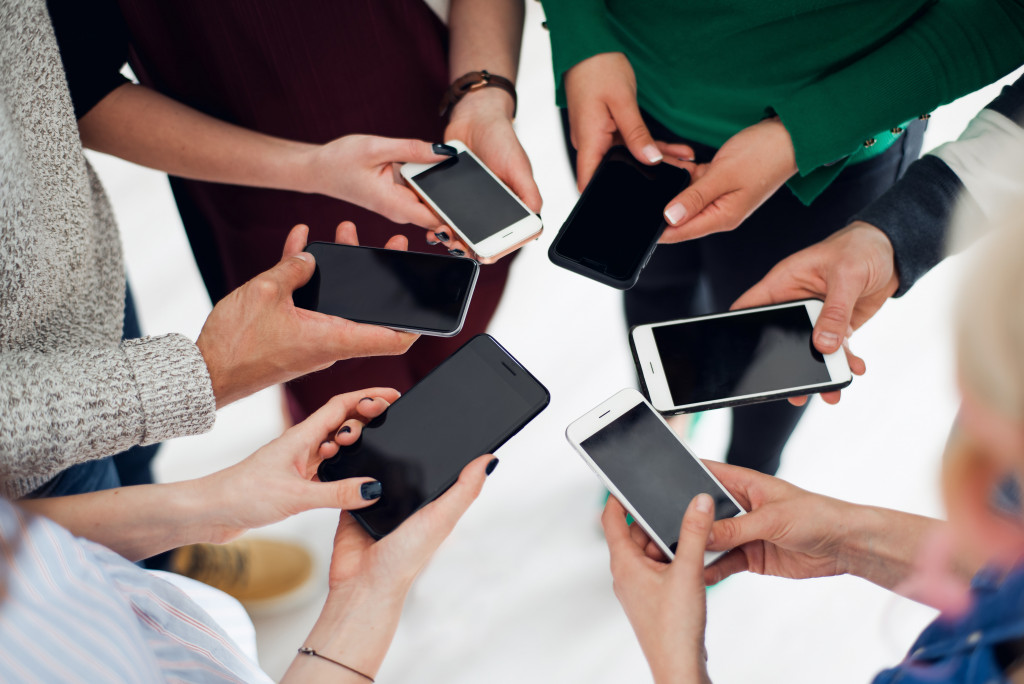Social media have changed a lot since Myspace. In fact, communicating with our friends seems like the secondary purpose of social media now. The primary purpose seems to have changed into seeing the latest trends and current events.
It’s as if the whole world has fit into the palm of your hand. Want to check out your favorite celebrity’s home? Chances are they uploaded a house tour video. Need to buy something? Ecommerce is rampant on social media, too. There’s almost nothing you can’t do if you have a social media account. It’s both good and bad for society and your personal well-being.
Good, because you can use social media to verify specific information. And of course, it gives you a platform for expressing yourself, communicating with your friends, and seeing what’s new with your favorite brands and celebrities. But enjoying those perks too much can be detrimental, too.
Browsing your feeds can draw out feelings of insecurity. And these days, it’s triggering a lot of anxiety too. For those reasons, “social media break” or “social media detox” became a common practice. As its name states, it’s the act of avoiding social media for a certain period. It can last from a few days to several months.
Even celebrities take a social media break. While it’s good to know that they’re stepping back from social media’s negative effects, it can be bad for businesses if this trend continues. It’s not that businesses don’t care about their consumers. Rather, it can be worrisome if their posts don’t attract enough engagement anymore. If users spend less and less time on social media, brand awareness may decrease.
How Much Time Do People Spend on Social Media?
A 2019 research revealed that only 22% of Irish people spend between one and three hours on social media per day. The time they spend on their smartphones is relatively greater, though. A different research showed that 25% of young Irish people spend four hours on their phones every day. Another 21% spend six hours or more.
But many of the young people surveyed think social media makes their life more difficult. The reasons include “unrealistic beauty standards”, “constant scrutiny and peer pressure”, and the “always-on culture”. Nonetheless, young Irish people still feel that social media play a positive role in their lives.

Brands can learn from these research findings. If they want to encourage young people to spend more time on social media, they should be a source of inspiration instead of pressure. For example, instead of promoting thin bodies and perfect skins all the time, they can be more diverse. They can also represent people with more realistic body types and complexions. That way, consumers can feel more connected to them.
Authenticity and Empathy: The New Way Brands Should Do Marketing
Most brands tend to focus on visuals alone when marketing on social media. They painstakingly edit each post to ensure that their feeds will stay “clean”. They Photoshop away a model’s imperfections. While consistency is important, focusing too much on perfection can make brands unrelatable. Their audience may not resonate with them as much as the brands want them to.
Nowadays, major digital marketing companies, such as Impressive.ie, are changing the norms. They now encourage brands to adopt a marketing persona. A persona will vary depending on the platform and audience. If they’re marketing on TikTok, the audience there will be younger than those on Facebook. Hence, the brand should adopt a younger persona in order to connect with TikTok users. If they’re marketing to mums on Facebook, then they should also pose as a mum.
It’s best to create multiple personas, especially if you’re marketing to multiple market segments. And those personas don’t necessarily have to be based on age. For example, Chipotle uses memes on their Instagram account to connect to their market segment that loves memes. As a result, they garner substantial engagement.
But if they used memes on their official website, they’d likely appear unprofessional. People who browse official websites aim to verify a brand’s credibility, after all. If they see nothing but memes on it, they may assume that the brand’s a fraud.
But no matter which social platform a brand uses, they should always add personality to their presence. Failing to do so could result in a robotic identity. Yes, too much perfection looks robotic. From now on, especially with a pandemic still keeping people apart, brands should realize that their impact has grown. They’re no longer just faceless entities. They’ve become a source of comfort and a sense of normalcy. If they become more authentic and empathetic, social media breaks won’t be so common anymore.



